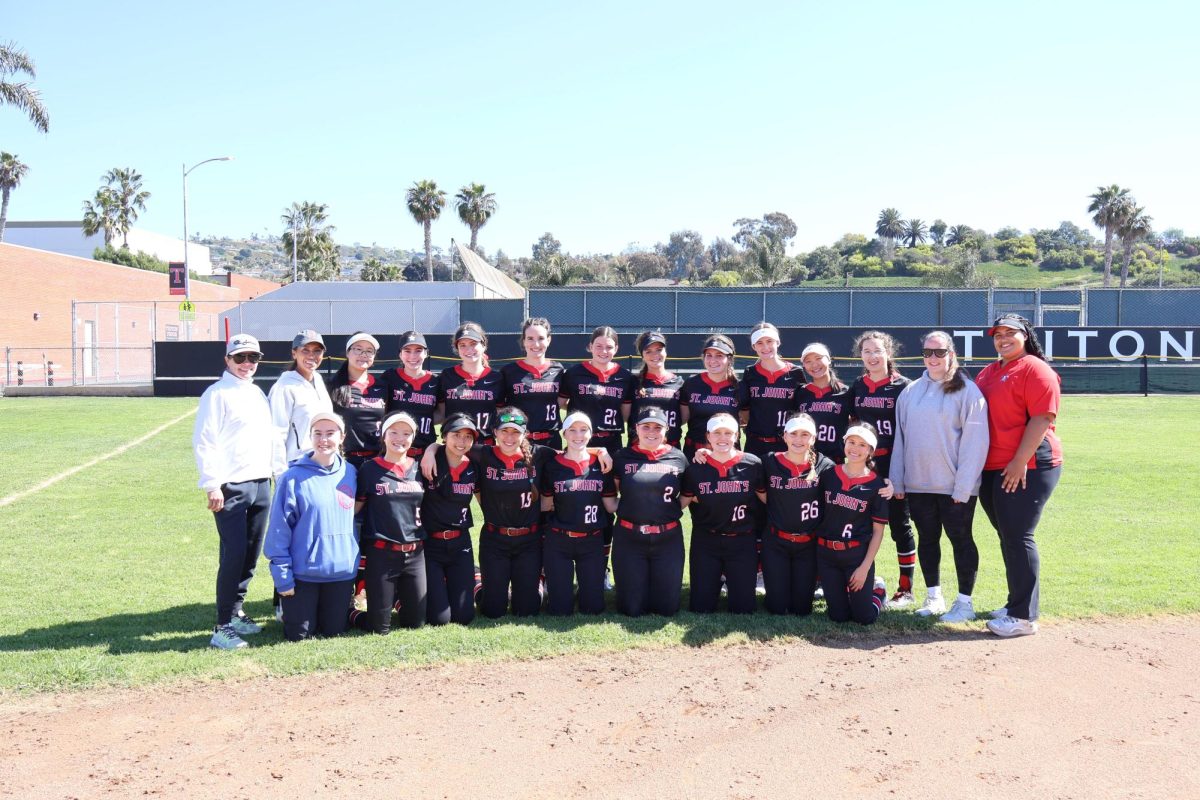Since its addition in 1988, the shortest Olympic swimming event was the 50-meter freestyle. As of April 9, that is no longer the case. The International Olympic Committee announced that swimmers will be eligible to compete in the 50-meter breaststroke, butterfly and backstroke at the 2028 Los Angeles Olympic Games.
“It’s such a good idea,” Associate Director of College Counseling Lesley Watkins said. “I can just picture watching the NCAA or the Olympics and the amount of excitement this will bring to the pool.”
Watkins, the parent of a competitive swimmer, has followed the sport closely for years. To her, the new 50-meter stroke events bring swimming closer to how track celebrates pure speed.
“We finally get to see who the fastest swimmer in the world really is,” she said. “There’s no pacing—just an all-out sprint from the start.”
Yet this excitement is not shared by all.
Sophomore Rian Du argues that this change takes away a certain skill component found in the sport.
“It would just be a competition to see who’s the strongest, who has the fastest reaction time and who has the best start,” Du said. “Anyone can stronghold their way for around 20 seconds.”
Regardless of the controversy, it is certain that these changes will impact the swim community.
“It completely reshapes the sport,” freshman Maya Lester said. “It makes it a lot more accessible to sprinters who can now qualify for better meets and more events”
With the inclusion of all 50-meter stroke events, the Olympic swimming program now boasts over 41 medal event opportunities. Previously, only the 100-meter and 200-meter distances were offered for each stroke, with the 50-meter free being the sole sprint option. Distance options featured 400-meter individual medley and 400, 800 and 1500-meter freestyle.
“The Olympics will be like a buzzer beater,” Lester said. “I can’t wait to see what happens.”
Beyond the global stage, all levels of the swimming community will be affected. High school and club meets will likely start incorporating these events, creating more opportunities for recruitment, qualifying times and stroke specialization.
“I don’t know if it will affect the St. John’s swim team because it is currently only applied to the meter pool right now,” junior Daniel Chen. “But if they do add them to SPC, I see a lot of scoring opportunities.”
Sophomore Evan Williams specializes in sprint freestyle events, leaving his options limited to the 50-meter and 100-meter.
“Every stroke has distance events—but now, the playing fields are more even for swimmers like me,” Williams said.
Williams primarily trains under Ultra-Short Race-Pace Training —a method that mimics race conditions through high-intensity intervals at or above race pace. For him, this training style caters towards sprint races.
“These events are exactly what I’ve been practicing for,” Williams said. “I’m hoping that my times and progress will really show.”
For those outside the swim world, these shorter events might also help grow the sport’s viewership.
“I don’t really like watching the long events—it’s just people swimming back and forth for a mile,” junior Kalyani Pandya said. “These short races bring a different kind of intensity.”
The change has brought controversy, hope and excitement on a global stage. As one of the most-watched global sporting events—second only to the Super Bowl and the World Cup—the Olympics set the tone for the future of athletic competition. Swimming consistently ranks as one of the top-viewed sports during the Summer Games, drawing in over 30% of viewers in the 2024 Paris Olympics.
“We will see how it plays out,” Chen said. “There is a lot of uncertainty. It could be continued, altered or removed entirely.”

















rong Z • Apr 13, 2025 at 1:59 PM
Interesting to read!